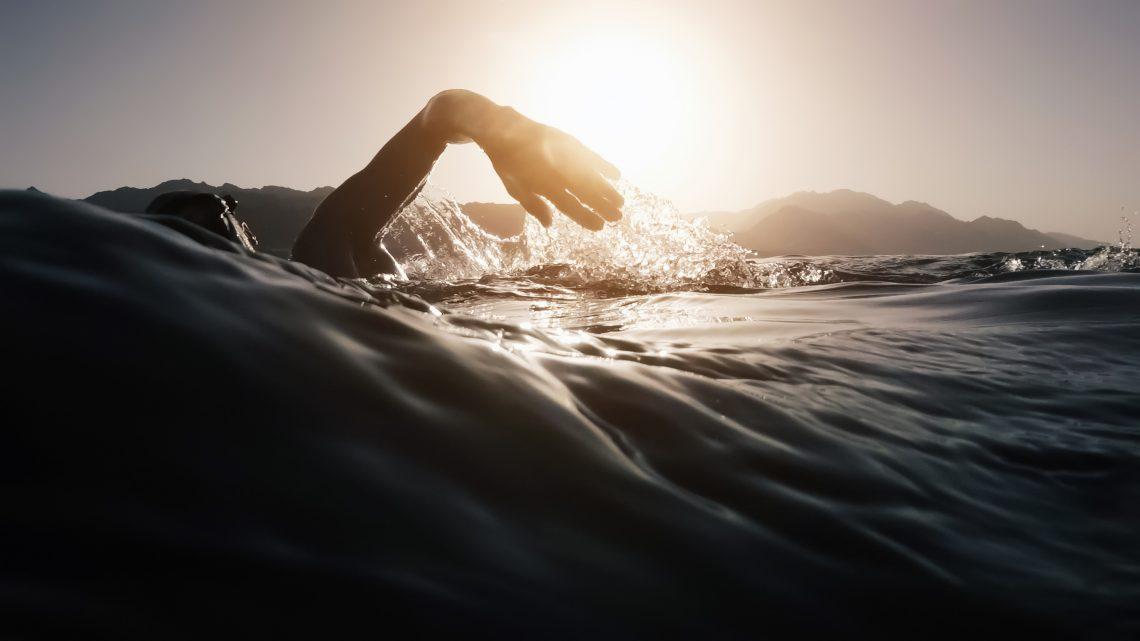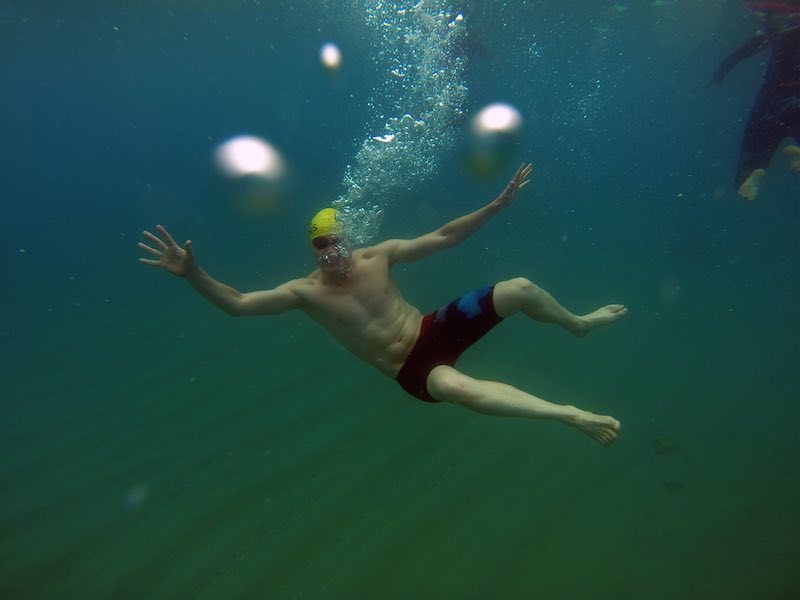
Pool to open water
Moving from the pool to swimming outside can be daunting. Our brief guide will help you take the plunge.
In life, “treading water” is a euphemism for failing to make progress but for swimming outside, it’s a useful skill to master. It allows you to wait for your friends and lifts your head out of the water so you can take in your surroundings or adjust your goggles. If you can learn to tread water without using your hands, you’ll free them up for waving to your friends or taking pictures.
The good thing is, you can practise treading water in the deep end of a pool. It’s worth doing. Try using a gentle side-to-side sculling motion with your hands and an alternating egg-beater type motion with your legs.
In fact, if you’re planning on swimming outside, we’d recommend spending some time in the pool first to build your swimming fitness and practising some outdoor swimming skills such as sighting. However, practising in the pool won’t prepare you for everything you’ll encounter outside. Let’s have a look at some of those things, and some strategies to help you make the transition.
Walls and boundaries
Indoor pool: even the biggest is still just a box filled with water
Outdoor swimming: wonderful, liberating space
How to cope: Freedom, as it usually does, comes with a price. No walls means nothing to hang on to for a breather, so make sure your swimming fitness is adequate before striking out. Where possible, swim parallel to the shore so it’s only ever a short paddle back if you get tired or cold and need to stop. Only head away from land if you’ve got adequate boat support.
Visibility
Indoor pool: Typically excellent (except in the summer when the water gets cloudy with suncream).
Outdoor swimming: From zero to excellent. Poor visibility doesn’t necessarily mean the water is unhealthy.
Limited visibility is most disturbing for first timers but you do get used to it. Stay calm. It doesn’t affect how you swim. Just lift your head if you want to see where you are. Wear goggles to keep the water out of your eyes. Alternatively, swim head-up breaststroke, look around and enjoy the water.
Things in the water
Indoor pool: other swimmers, plasters, hair
Outdoor swimming: sticks, leaves, plants, fish and much more
How to cope: The first time you brush against something unseen in open water will set your heart pounding. You’ll think your worst nightmares have come true. Fortunately, most of what you bump into in open water is completely harmless. With experience, you learn to ignore it and just keep swimming. Fish will avoid you. Look forward to your first jellyfish sting. Unless you’re extremely unlucky and have an allergic reaction, it probably won’t be as bad as you feared, and you’ll be able to trade sting stories with other swimmers. Make sure you take pictures of your stings.

Water conditions
Indoor pool: occasional ripples from other swimmers
Outdoor swimming: anything from glass flat to powerful currents and towering waves, along with whatever the weather throws at you.
How to cope: Know your limits, and then gradually extend them. Observe the water and understand how it moves. Skilled swimmers make use of currents and waves and seem to effortlessly cut through chop, while the inexperienced fight the water and quickly become exhausted. Watch and learn from more experienced swimmers. Pay attention to how you feel when you’re swimming and get a sense of the timing and movement of the water. Swimming in rough water can be truly exhilarating, but don’t do it until you’re ready.
Water temperature
Indoor pool: Typically 27 to 31 degrees Celsius.
Outdoor swimming: 0 to 30+ degrees. Typical outdoor water temperatures in the UK in summer range from around 14 to 20 degrees.
How to cope: Cold water is commonly people’s biggest fear before they start swimming but often turns out to be much less of an issue than they thought it would be. The first couple of minutes are usually the worst. Be bold. Become the person saying, “come in, the water’s lovely,” rather than the one quivering on the bank. Seriously, the more often you swim outside, the more pleasant it becomes.
A good trick, when you first get in, is to decide to swim to a rock, buoy or some other object about 20 to 30 metres away, and tell yourself you can get out if you’re still too cold after that. Usually, you won’t be.
Hint, if you want to try swimming in cooler water before venturing into open water, visit an unheated lido.
Safety considerations
Swimming pools are extremely safe environments. When you swim outside, you’re exposed to nature and you need to adjust accordingly. Outdoor swimming is not necessarily dangerous but there are hazards you should be aware of. The key message is to pay attention, think before you jump and don’t mix swimming with alcohol. Stay well within your limits and get out when you start to feel cold or tired. Make sure you understand the dangers of cold water shock and hypothermia.
For more details on safety see: outdoorswimmer.com/open-water-safety








